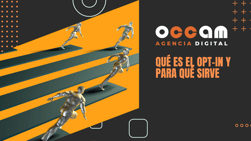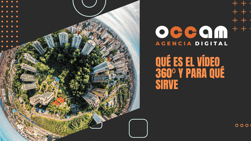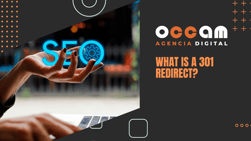Index Content
To ensure the compliance of a website with usability levels, the designer needs techniques, methodology and procedures focused on this objective. In this case, the methodology we are going to follow is user-centred web design, taking into account the characteristics of web application development. Will you join us? Let's share with you what user-centred web design is all about.
User-centred web design, what is it?
When we talk about web design, we refer to an area focused on the development of digital interfaces, such as the design of applications or websites, using languages such as HTML.
have you ever abandoned a website because it took too long to load, or just didn't like the design and structure of the content? All this shows that the web design has not been done with the user in mind, which leads to a poor visitor experience and a reduced conversion rate into customers.
User-centred web design is a methodology that prioritises the objectives, characteristics, needs and interests of the user. But what do you need to ensure a quality web design? We tell you about it in the following section..
How to guarantee a quality web design
To ensure a good user experience on your website you need to take into account a number of requirements:
- Visibility: At a glance, the user should be aware of what they can and cannot do with the website, andcompanies can be much more visible with App or web development.
- Accessibility: The site can be used by everyone, regardless of sensory, physical or technical capabilities.
- Readability: The content should be easy to read and it is recommended to use good contrast and simple fonts.
- Language: All text used on the website should be easy for visitors to understand.
Nowadays, every business needs to have a website. It is the showcase for brands in the digital world. Are you ready to take the plunge? Do you have a website but are not getting the results you want?
Main features of user-centred web design
The vital point that characterises user-centred web design is the focus on the user at the centre of the work. The activity is developed by and for the user. Instead of asking them what they want or trying to find a magic solution to meet their needs, we involve them in all the processes of the design, development and implementation of the project to try to do the job for them.
Another of its main characteristics is usability, i.e. intuitive and easy to use software, not to be confused with user-centred web design, as this is the methodology, and visibility is just one attribute that is improved using this methodology.
Now, think of the traditional desk phones that we have used for so many years. It features key elements such as: the measured distance between the handset and the microphone, the embossed numbers, the extendable cable, etc. All these features have been developed with the user's needs in mind, and the user was involved in all phases of the design and development.
Therefore, we can speak of a technology developed with the user in mind.
User-centred product design and development phase
Here are the phases of 100% user-centred web design and development:
- Analysis. We collect data and requirements necessary for the development. For this, interviews, surveys and meetings will be conducted with the client to find out their wish list, opinions and user experiences, qualitative and quantitative analysis.
- Conceptualisation: We try to transcribe all the requirements into a model and prototype it. At this point, techniques such as cardsorting can be put into practice, where written concepts are grouped on cards, which is very useful for navigation menus.
- Prototype: Different designs so that the user can perceive how it would be developed and what the final appearance would be. In this phase we find: Sketch, wireframe, mockUp, functional prototype.
- User testing: This is the testing part where user tests and heuristic analysis (to measure the quality of the interface of any system in relation to the ease of use by users), benchmarketing (to know the relative position of a project in relation to others of the competition), among other techniques, are carried out.
- Development and implementation(to automate the process and streamline the management of information). Development has, in turn, other phases (research, planning, site and content architecture, design, testing, maintenance, marketing, etc.).
do you have any doubts about these phases? Would you like to put this web design methodology into practice? Start here and now.





